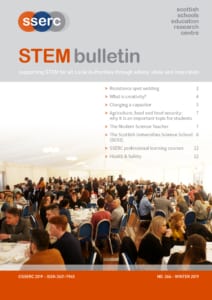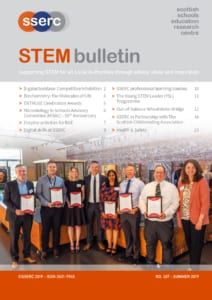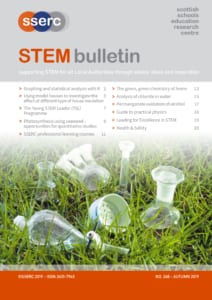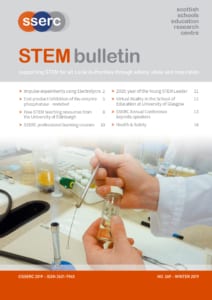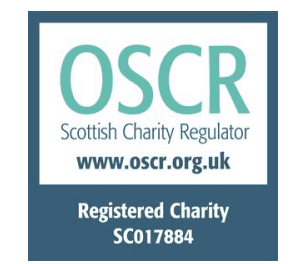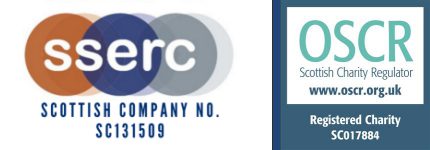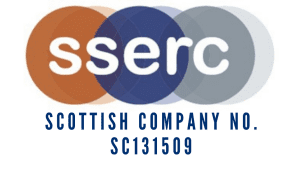One of the core activities in chemistry at all levels is heating substances. This is usually done with little fuss and few accidents. The presence of naked flames and hot objects or substances is, however, a significant hazard so a review of methods and techniques for heating chemicals seems timely.
Resistance spot welding, usually referred to as spot welding, is a process that is widely used for joining thin sheet metal. This type of welding is commonly used in technology departments due to its fairly straight forward use and quick results. However, there are some tricky issues in the initial setting up of the spot welding equipment and as a result we have put together this quick and handy guide.
With many schools electing to do what we might call “core” experiments for their Higher Assignments, we thought it would be worth revisiting some of these to give advice on equipment and component values. We are aiming to help teachers and technicians here – beware of passing this material unedited to students. You could be giving them too much information. It is not designed to be a “second source”. We have an evolving document on the Higher Physics area of our website that features a number of what we consider to be suitable experiments. This article showcases one example – charging a capacitor.
Agriculture, food and food security: why it is an important topic for students
We were very fortunate in having Professor Tim Benton as the Keynote Speaker at the SSERC Annual Conference in November 2018. Tim is Dean of Strategic Research Initiatives at the University of Leeds and Distinguished Visiting Fellow at Chatham House. From 2011-2016, Tim was the UK Champion for Global Food Security, acting as ambassador and spokesperson for matters to do with food and food security, and coordinating work across this area between research councils and government departments. We were fortunate that Tim gave us permission to record his presentation and we were delighted when he also agreed that we could make it more widely available through the SSERC YouTube channel. We hope that you and your students enjoy the video despite some of the predictions being ‘scary’! Click here to view the video.
The Scottish Universities Science School (SUSS)
Many of you reading this brief article may have started your association with SSERC through attendance at a SUSS event. Without doubt, SUSS is, for the SSERC team, the most complex and challenging event in our calendar. We thought it might be interesting to look back at what has been achieved over the years.
SSERC professional learning courses
Our professional development courses range from twilight events, day-courses through to residential meetings lasting up to 6 days in total. Our curriculum coverage spans both primary and secondary sectors and we offer events for teachers as part of their career long professional learning, newly qualified teachers and technicians. Many of our events receive funding from the ENTHUSE awards scheme or the Scottish Government.
Voltage values for safe circuits
We are now issuing the following advice on voltage levels for circuit building in schools:
- Pupils and students should carry out such work at no more than 30 V, irrespective of whether ac or dc is used.
- If there is a chance of touching an uninsulated conductor with wet skin, or of touching an uninsulated wet conductor, the limit becomes 15 V.
β-galactosidase: Competitive inhibition
In the past few years the Biology Team at SSERC have published details of several enzyme assays which could be used to support Higher Biology and Higher Human Biology; such enzyme systems include phosphatase, catalase, and β-glucosidase.
SSERC was delighted to host the Scottish ENTHUSE Celebration Awards 2019 at the Engine Shed in Stirling on 14th May 2019. These awards celebrated excellence in STEM education in Primary & Secondary schools, in school leadership and for technicians and support staff . The event allowed SSERC to commend the commitment of the winners to professional learning and the impact that it has had on them, their pupils and their school.
The Biology Team at SSERC has decided to have another look at some activities which we think might be suitable for the study of enzymes at BGE, or National 4 Biology, where learners are required to take part in practical activities which illustrate the, “…properties of enzymes and their use in industries’’.
We are delighted to report that, with support from the government, we are able to deliver digital skills training across both primary and secondary sectors. A new Digital Skills Education Officer is in post and with the support of the Digital Team in Education Scotland, we have been able to offer a range of digital skills courses.
SSERC professional learning courses
Our professional development courses range from twilight events, day-courses through to residential meetings lasting up to 6 days in total. Our curriculum coverage spans both primary and secondary sectors and we offer events for teachers as part of their career long professional learning, newly qualified teachers and technicians. Many of our events receive funding from the ENTHUSE Bursary scheme or the Scottish Government.
The Young STEM Leader (YSL) Programme: Inspiring and developing young people through STEM
A new Scottish programme which will give children and young people the chance to develop their personal skills through Science, Technology, Engineering and Mathematics (STEM) is being piloted this month (June).
Out-of-balance Wheatstone Bridge
This is another article that might help you guide your students towards a successful Higher Investigation. The Wheatstone Bridge is not mentioned in the Higher Physics Course Specification. The potential divider is included, and the Wheatstone Bridge can be thought of as an application using two potential dividers. Investigating the voltage across the bridge when it is out of balance is straightforward and, if the correct setup is used, gives good results.
SSERC in Partnership with The Scottish Childminding Association
At SSERC we pride ourselves on providing excellent STEM (Science, Technology, Engineering and Mathematics) focused Career Long Professional Learning (CLPL) opportunities for educators across Scotland.
Health and Safety section (entire)
TIG Rods – how to use thoriated TIG welding rods safely and effectively in radioactivity experiments.
Welding fumes – a change in the law on welding that can affect schools
Sodium in water incident – and incident in a school which deserves sharing
Graphing and statistical analysis with R
Graphing is a really important skill in the sciences. Graphs provide an excellent way to organise data but, more importantly, such visual aids can be really useful when it comes to interpreting data and looking for patterns. One relatively easy way to get professional-looking graphs is through using the soft ware package known as R.
Using model houses to investigate the effect of different types of house insulation
Model houses are used to investigate which type of insulation has the most effect on the ambient temperature of the house. Wooden model houses for this investigation are now difficult to source from science equipment suppliers. Here we show how model houses can be made from old cardboard boxes. The houses are simple to make and robust.
The Young STEM Leader (YSL) Programme: Inspiring and developing young people through STEM
Excitement, interest and positivity around the YSL Programme continues to grow across Scotland.
Photosynthesis using seaweed – opportunities for quantitative studies
In a previous article we suggested that seaweeds might offer opportunities for studying a range of parameters in relation to the rate of photosynthesis. We described how one might measure absorbance changes in hydrogencarbonate indicator solutions in the presence of knotted wrack (Ascophyllum nodosum) as a measure of photosynthesis activity. We have described other uses of this technique on previous occasions. We describe here an updated version of our previous work and offer suggestions for how the technique might be extended to offer opportunities for quantitative studies.
SSERC professional learning courses
Our professional development courses range from twilight events, day-courses through to residential meetings lasting up to 6 days in total. Our curriculum
coverage spans both primary and secondary sectors and we offer events for teachers as part of their career long professional learning, newly qualified teachers
and technicians. Many of our events receive funding from the ENTHUSE Bursary scheme or the Scottish Government.
The green, green chemistry of home
The concept of ‘green chemistry’ appeared on the scene in the mid to late 1990s. The name certainly gives an indication but it is an approach to chemistry which aims to minimise the use and generation of hazardous substances. Green chemistry focuses on the environmental impact of chemistry, including technological approaches to preventing pollution and reducing consumption of nonrenewable resources.
We all know that seawater is salty. We also know that this is due, in the main, to the presence of sodium chloride. (To be more precise, there is not actual sodium chloride present, merely sodium ions and chloride ions along with a host of other anions and cations in smaller quantities but it is convenient to talk in terms of sodium chloride). There are also chloride ions in far smaller concentrations in many ‘fresh’ water sources. A glance at the compositions of mineral waters will show chloride as a significant component.
Permanganate oxidation of alcohols
The oxidation of alcohols is commonly carried out on a test-tube (or spotting tile) scale to demonstrate to pupils the different properties of primary, secondary and tertiary alcohols.
Leading for Excellence in STEM
Graham Donaldson, in his review of teacher education in Scotland, noted that international evidence ‘…suggests, perhaps unsurprisingly, that the foundations of successful education lie in the quality of teachers and their leadership. High quality people achieve high quality outcomes for children.’
An update on health and safety regarding aged protactinium generators.
Impulse experiments using Electrolycra
This is an inexpensive, simple method of getting a force/time graph and comparing impulse with change in momentum.
End-product inhibition of the enzyme phosphatase – revisited
The SQA Course Specifications for Higher Biology and Higher Human Biology each suggest, as a context for the study of metabolic pathways, a learning activity where students might, “Carry out experiments based on end-product inhibition using phosphatase and phenolphthalein phosphate”.
Free STEM teaching resources from the University of Edinburgh
The School of GeoSciences, in collaboration with the Open Educational Resources (OER) Service, at the University of Edinburgh have released a series of free STEM teaching resources for school teachers and educators. The resources, which can be downloaded free of charge from TES Resources, are accompanied by Curriculum for Excellence learning objectives and outcomes, and are designed to be easily re-used and adapted for different classroom scenarios and curriculum levels.
SSERC professional learning courses
Our professional development courses range from twilight events, day-courses through to residential meetings lasting up to 6 days in total. Our curriculum coverage spans both primary and secondary sectors and we offer events for teachers as part of their career long professional learning, newly qualified teachers and technicians. Many of our events receive funding from the ENTHUSE Bursary scheme or the Scottish Government.
2020: year of the Young STEM Leader
“2020 will be the year of the young STEM Leader” Alastair MacGregor, Chief Executive of SSERC
Virtual Reality in the School of Education at University of Glasgow
When we wrote in Bulletin 260 on the control measures for using virtual reality in the classroom, we admitted that we did not have much experience of the technology ourselves and wondered if our safety advice was draconian. Since then, we have worked with Gabriella Rodolico of Glasgow University who used our guidance and found it to be entirely appropriate. We thought that Gabriella’s findings on the pedagogical aspects of VR would be of interest to many teachers of STEM subjects.
Safety in Microbiology Level 3 training
Safety in Microbiology – A Code of Practice for Scottish Schools and Colleges (SSERC 2018), the most recent edition of which was issued to schools in December 2018, contains guidance on the safe handling of micro-organisms for local authority and SSERC member schools and colleges. In most cases, local authority, or independent school/college, employers have adopted the Code of Practice to meet the requirements of the COSHH Regulations and of other related health and safety legislation.
‘What is the maximum capacitance allowable for a capacitor that will be used by students?’ A query like this one was emailed to our helpline and, as is often the way of these questions, there turned out to be more to it than initially seemed to be the case.
A new edition of Safeguards in the School Laboratory
At its Annual Conference in Reading, ASE launched the 12th edition of Safeguards in the School Laboratory. This familiar title was written by members of the ASE’s Health & Safety Group and is intended for all those involved in 11-19 science education. It will be particularly useful for newly qualified and trainee teachers, new technicians and for those seeking promotion to, or newly-appointed as, heads of department, senior technicians, etc. Having said that, one experienced former head of department, who joined the Group shortly before the revision started, was astonished at how much he hadn’t known!
Our latest updates on health & safety. Microbiology Level 3 training, Capacitors, New edition of Safeguards in the Science laboratory.

